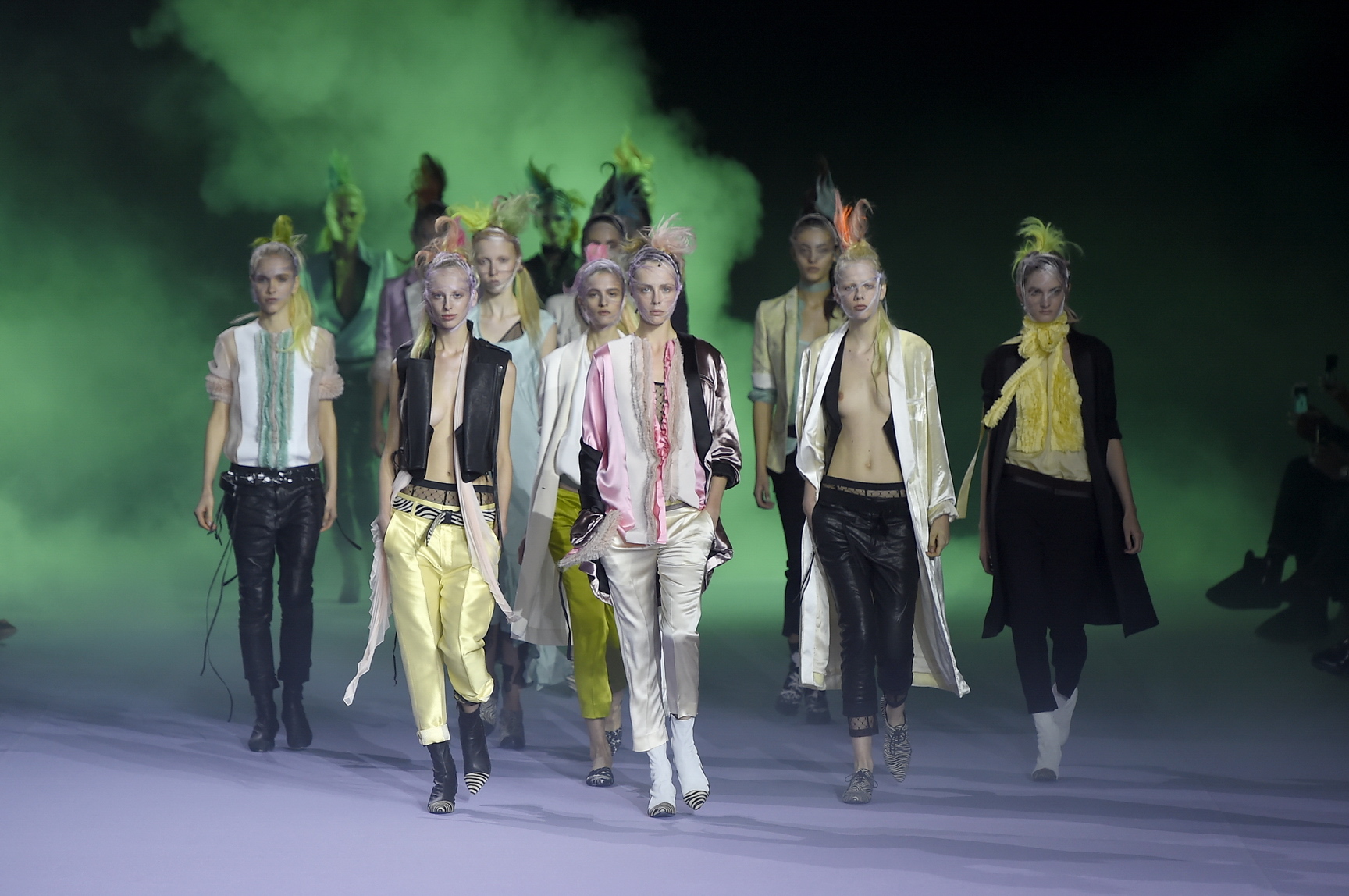Over the past four seasons, Rei Kawakubo’s collections at Comme des Garçons have revolved around such symbolism as blood and roses and the ceremony of separation. It’s been a dance with death open to interpretation – and often over-interpretation – which in all likelihood could be simplified to a reaction on Kawakubo’s part to the issues we all deal with, from the state of the world to the cycle of life. The only thing you can be sure of is death and taxes, as Benjamin Franklin wrote, but on Saturday in Paris it was as if Kawakubo proposed a less cynical view than that. “Blue witch,” was what she enigmatically told guests backstage, following an emotional show different in sentiment to its four predecessors. Music from David Lynch’s Blue Velvet set an elated tone for the collection, characterized by its saturated fuzzy red wigs and the royal blue used in the latter part of the show.
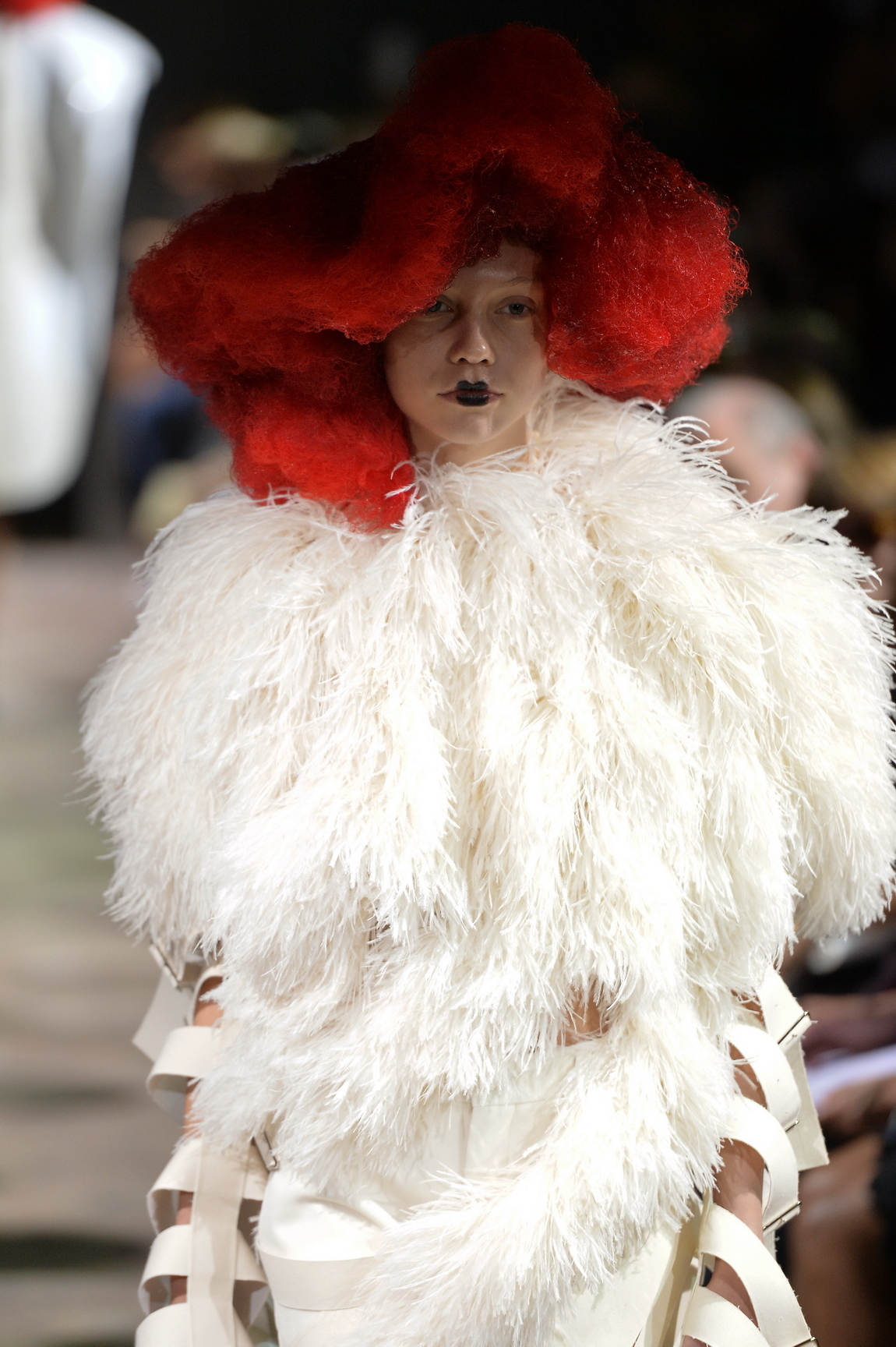
Regal feathers, louche leopard and vivacious ruffles shrouded Kawakubo’s majestic titan women in mystery, but it was the encouraging kind: somehow these opulent elements were all gravitating towards the light and reflecting it in their own image. Gone was the weltschmerz of previous seasons—in its place, a careful optimism rooted in an appreciation of wonder expressed through those rich materials; the marvels of nature, or in the forever echoing words of Sibling’s show notes earlier this season in London: “And God created leopard.” In Celtic tradition, the blue witch represents patience and peace, much like a fairy godmother. Were Kawakubo’s blue witches out to save the world? You can only hope. Keeping in mind the last four Comme des Garçons shows, her collection could have been interpreted as an illustration of the afterlife, but honestly, it felt more like a tribute to life itself.
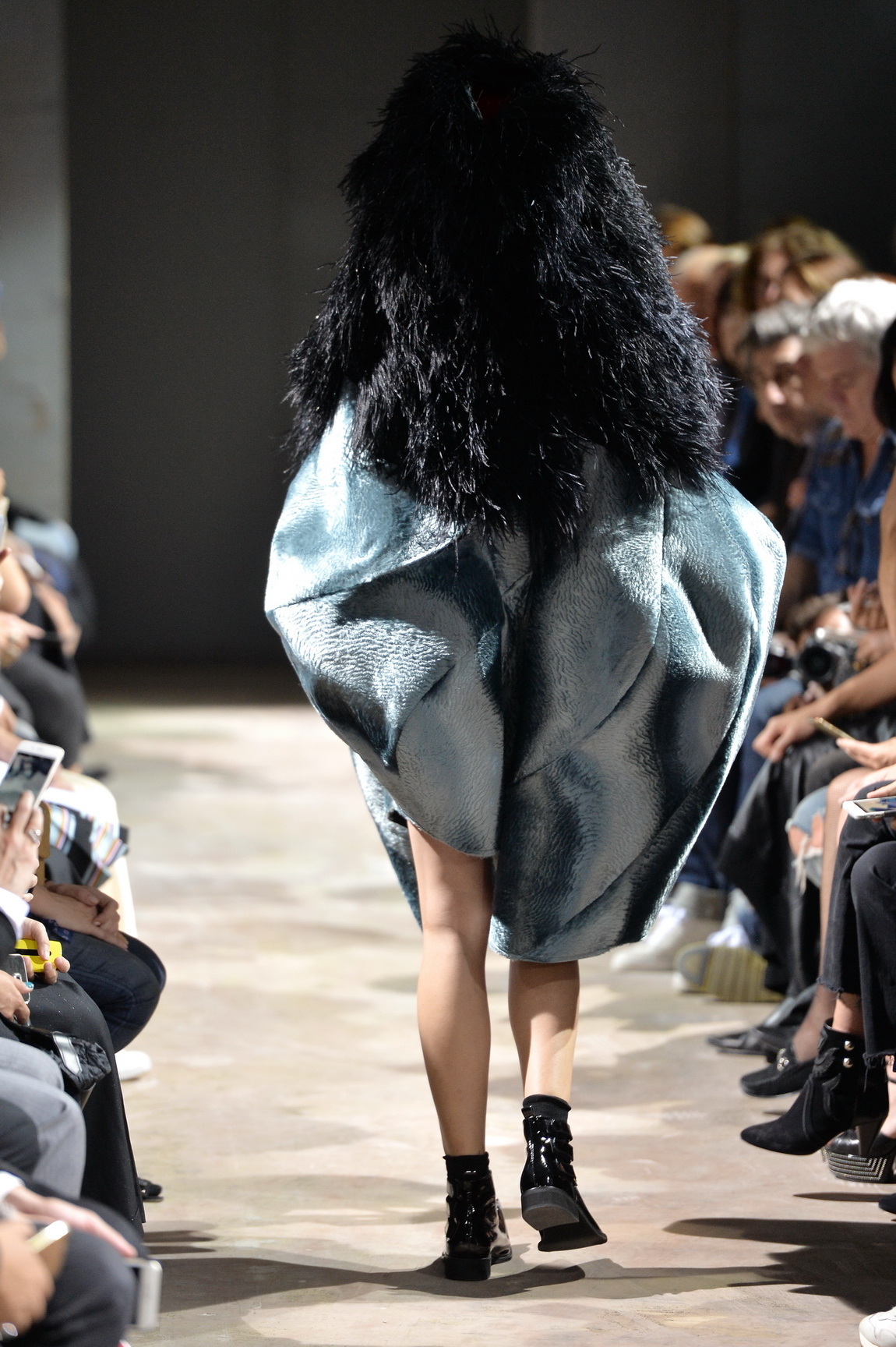
“Of course you’re inspired by what’s going on around you. You want to belong to somewhere,” Haider Ackermann said after his multi-colored show in the morning. “We all want a global nation. We all want to have a family. And we live in a crazy world nowadays.” His words were the most direct reference this season of any designer to the migration crisis that’s currently sieving through Europe while we travel through this bubble of fashion shows. Adopted from Colombia into a peripatetic French family, the foundation of Ackermann’s life is based upon relocation and the ever-present desire to belong to something, whether it’s a place or a certain tribe or family. He expressed that sentiment in a rare show of ravy pastels used in shiny garments and hair that would make My Little Pony swoon.
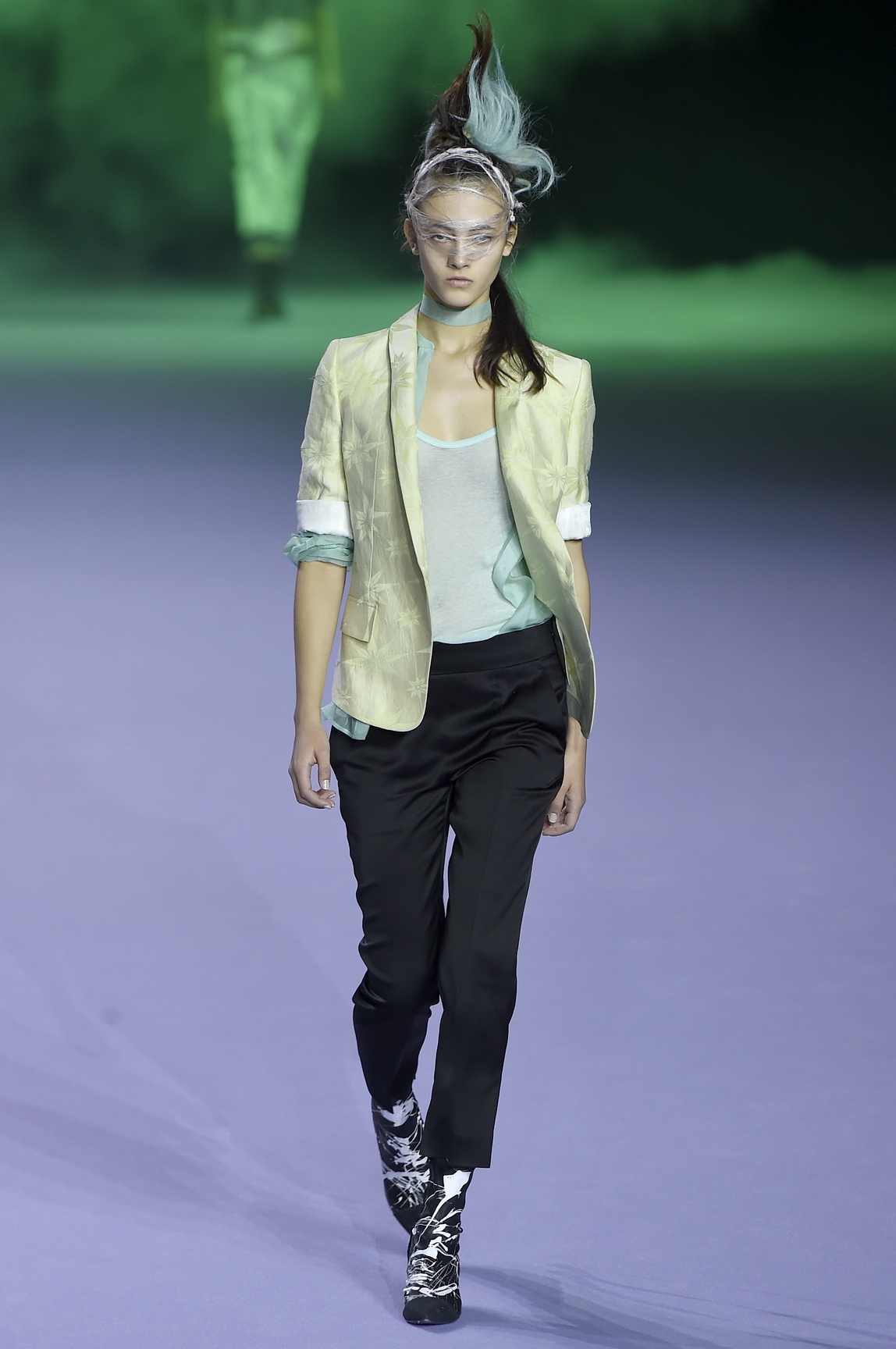
The bright, sanguine loudness of those colors each represented a personality – individuality – but together, they looked like one big, happy family. “Those girls were bold and they all had attitude, and they were individuals. And they love to be together,” Ackermann reflected post-show, beautifully turning his idea of multi-colorism into a message of multi-culturalism. Since the men’s shows in June, so many of which dealt with globalism and globalization, the women’s show oddly haven’t dug very deep into this situation Europe is currently facing. Perhaps it’s because it’s simply too big a mouthful, or maybe it’s the touchy nature of the topic. When Junya Watanabe presented his African tribal collection at the men’s shows this summer, i-D’s Instagram caught fire with comments about the all-white cast.
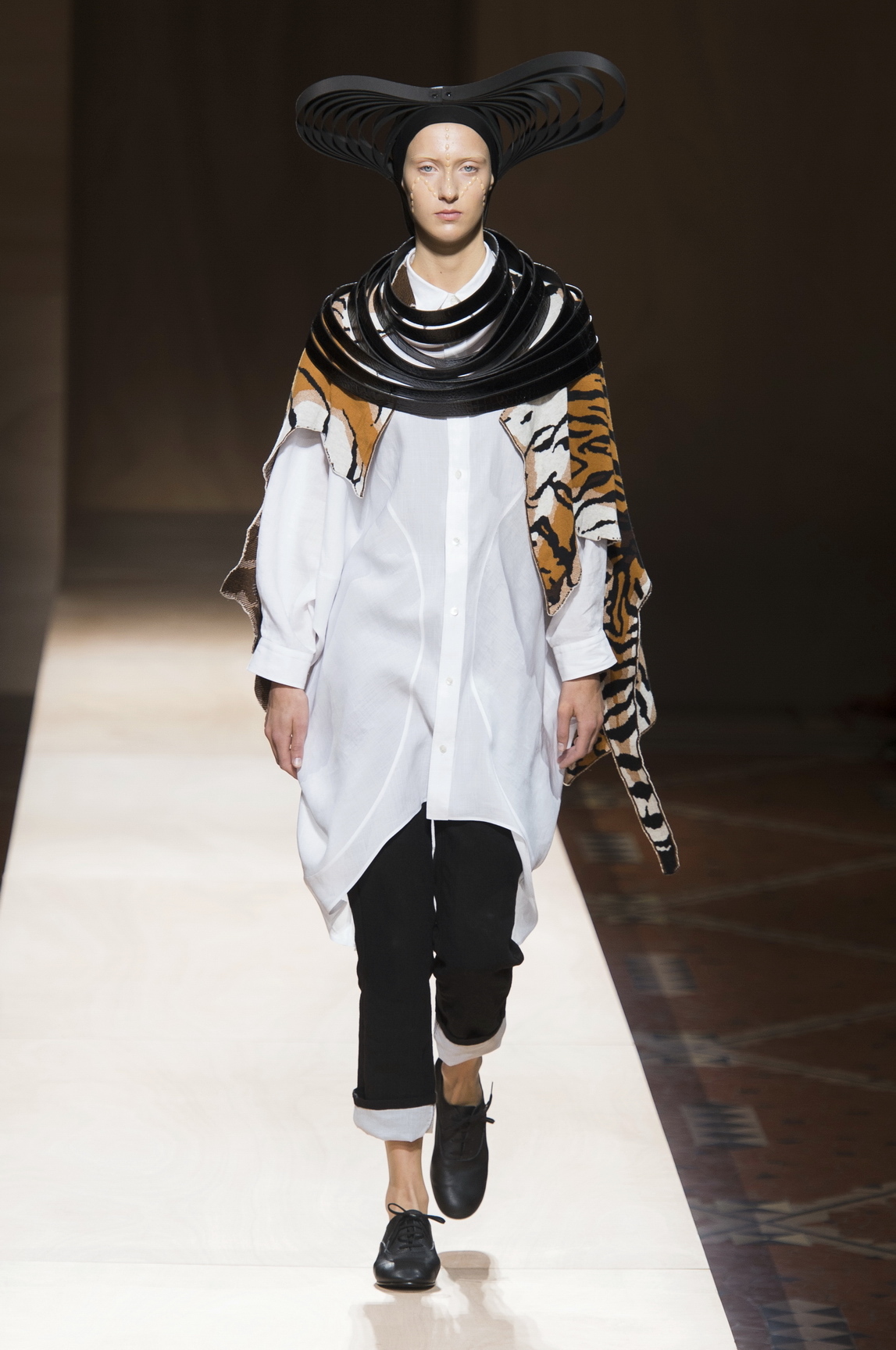
A controversial move for Watanabe, the show forced you to wonder what made him do it. Saturday he presented the women’s counterpart, also – not randomly – shown at the Museum of Immigration in Paris. White models adorned with Watanabe-fied tribal gear epitomized the show, which – by interpretation strictly personal to yours truly – shared the idea of that colonial phenomenon of culture adaptation. After the anti-bigotry enlightenment in the 20th century, Western people stationed in colonial countries on their way to independence were re-educated in terms of their position in these countries, and some went to great lengths to respect the indigenous culture surrounding them. So much so that the somewhat comical-looking idea of the white man in tribal gear materialized, something that could seem offensive but was truly meant to be respectful.
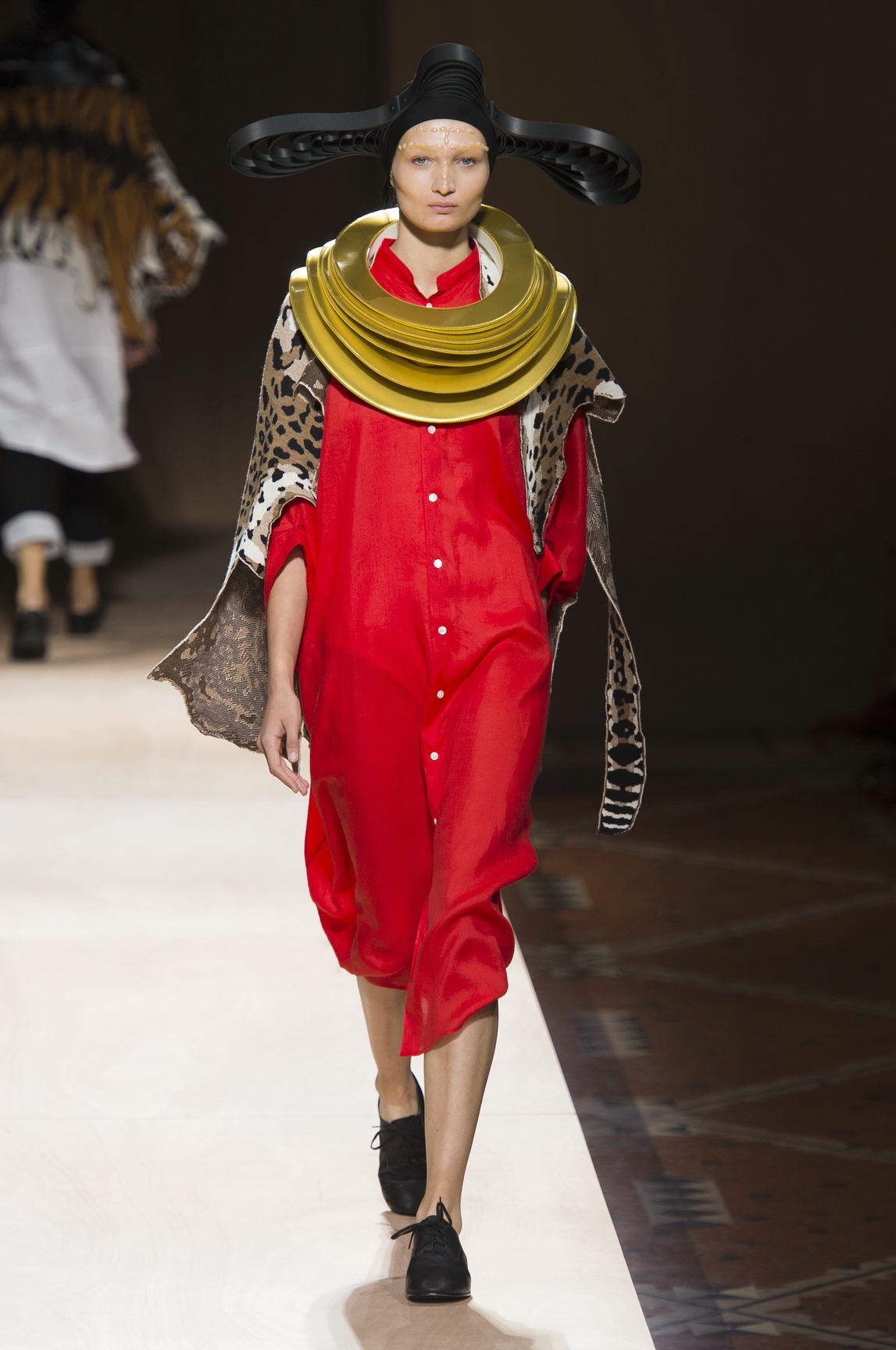
Fast forward half a century, and we now find ourselves in an even more politically correct world where the majority of Western people go out of their way not to seem culturally disrespectful. Some become too eager in their willingness to embrace cultures different to their own, and in turn end up offending them. A white woman walking down the street in London wearing, say, a type of traditional African costume would think she was being open-minded, while people who descend from that tribe might think the total opposite. Damned if you do and damned if you don’t, it’s a type of culture clash that’s innocent at heart, but can only be healed by time. If that was what Junya Watanabe was trying to convey, it was a sympathetic notion—and on the backdrop of the immense migration happening right now, it made you stop and think.

For his women’s collection, Neil Barrett’s also riffed on his idea from men’s – as is his way – touching upon the notion of fusing the cultural trademarks. His subject was the traditional motif from Keffiyeh scarves of the Arab world, worked into a print resembling camouflage. This year has seen great expansion to Barrett’s company, which has added to his frequent flyer miles extensively, especially in Asia where his presence is ever-increasing. For the Milan-based designer, globalism and globalization are constant realities, which he deals with in his work, merging together cultural elements as easily as he does codes from men’s and womenswear. For his spring/summer collection, he sliced up long kilts into frills, which he said could either be worn on their own as a skirt or with a layer underneath, effectively creating a belt. Modern times—they’ve arrived.
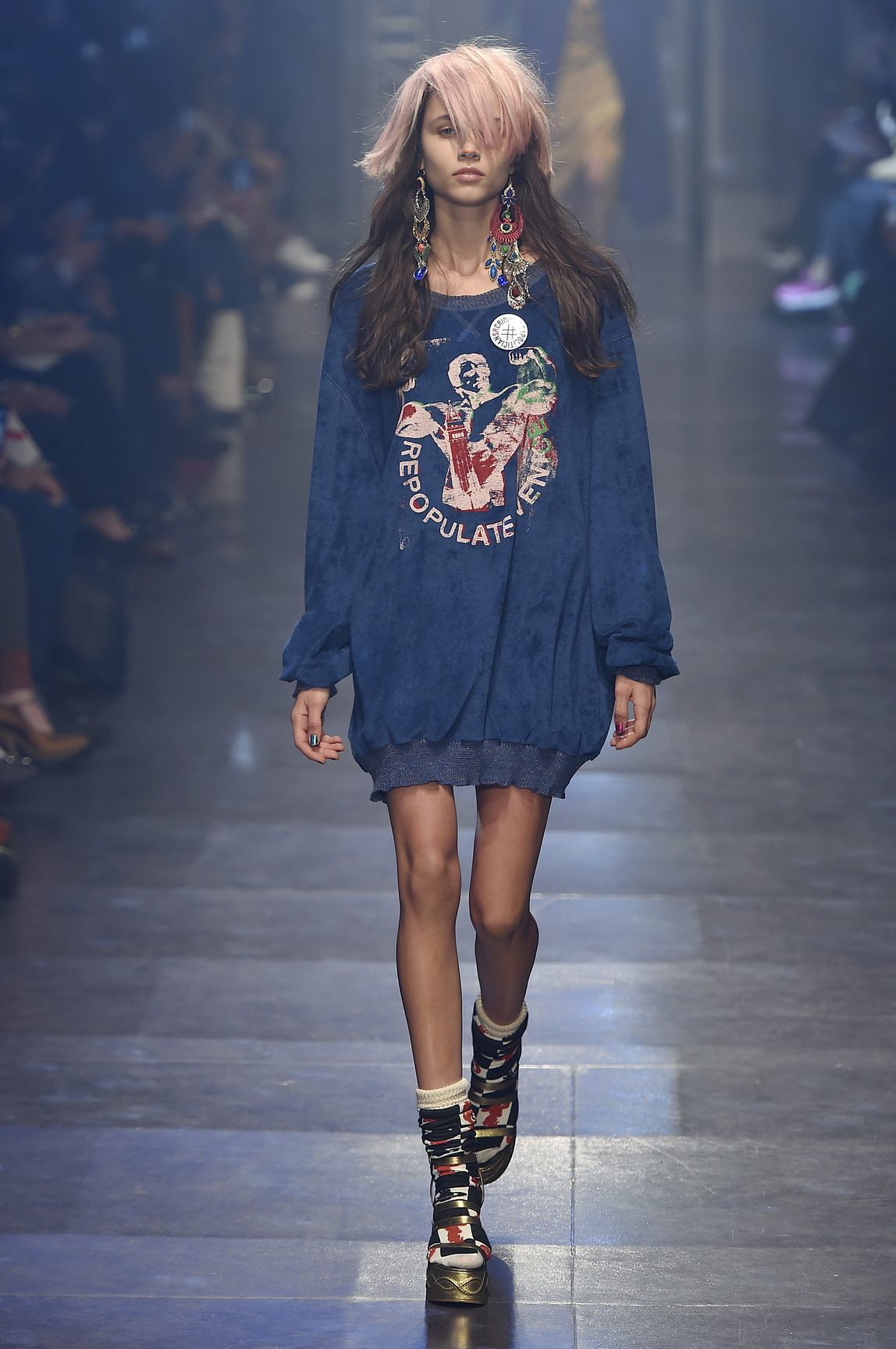
At Vivienne Westwood Gold Label, it was about the world, too. More specifically, a small but vital slice of it known as Venice, that cultural treasure off the North-Eastern coast of Italy, without the art history of which we probably wouldn’t be having a fashion week at all. Punk as it is, Dame Vivienne’s aesthetic lends itself effortlessly to Renaissance opulence, and for her call to save Venice – which has been subsiding over the past century due to global warming – she and Andreas Kronthaler went deep into the wardrobes of the stilted city’s most notorious characters, from the beautiful daughters of the dynasties to the Doge and the scheming cardinals with the bloody hands. It was pure theatre, covered in ravishing embroidery and swirly Venetian embellishment. If this is what saving the world looks like, get to it already.
Read more i-D fashion month coverage here.
Credits
Text Anders Christian Madsen
Catwalk Photography Mitchell Sams
